Understanding systems thinking is a must for modern leaders. In Reading the Room, David Kantor outlines a list of leadership capacities based on systems thinking and structural dynamics. They are particularly useful as a reference for developing your own leadership philosophy, practice, and model.
Some of the terms Kantor uses are specific to his structural dynamics model that I'll reference in future posts. Nevertheless this list will give you plenty to think about.
(1) Knowing the self
Leaders must be aware of their personal stories; how these lead to patterned behavioral propensities; and in particular, how their shadows, those darker parts of stories, impact others.
- Personal stories often acts as hidden mental models (different from Munger's concept of latticework of models), and are especially critical to understand from a leadership performance perspective.
Mental Models - A Subtractive Approach
Most common discourse on mental models takes an additive approach. But this tends to be half-baked, often useless in practice. There is equal value, even more so, in a subtractive approach to mental models. The key is in understanding the difference between hard and soft mental models. How is the
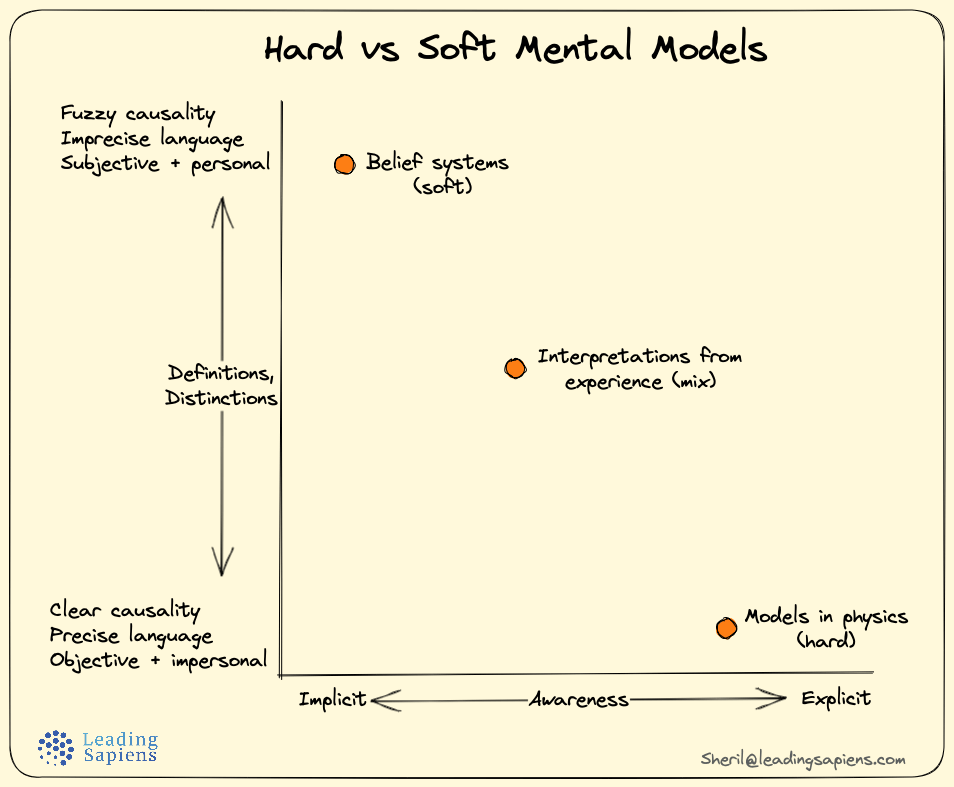
(2) Soliciting feedback
Leaders must know how to ask for and accept critiques, criticisms, and hard truths in up, down, and across relationships, without penalizing the informant. When models are in contention, leaders must know how to allow and manage constraint, a key form of feedback.
- Edgar Schein's framework for constructive feedback is one I've found especially useful.
7 Principles of Effective Constructive Feedback
Most managers suck at giving effective, constructive feedback. Equally, most of us are bad at receiving and processing constructive feedback. This is a lost opportunity for everyone. Edgar Schein, professor emeritus at MIT, was one of the foremost experts in organizational behavior and interpersonal interactions. He articulated a set of
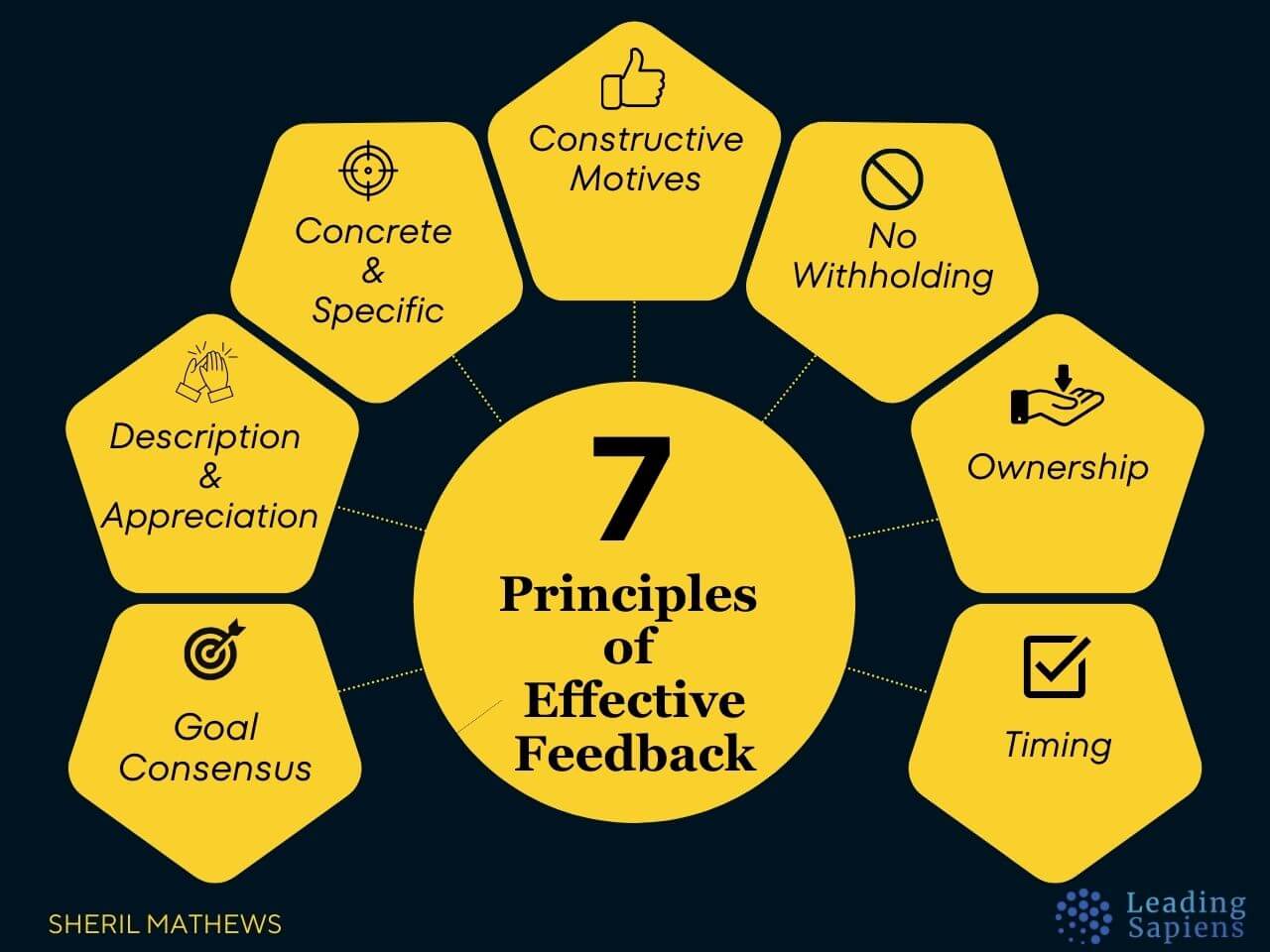
- Roger Schwarz's ground rules for effective meetings is useful to ensure all perspectives are taken into consideration.
(3) Managing teams
To manage teams and working groups, leaders must know how small, face-to-face groups work as systems. To promote the team’s ultimate goal of communicative competency, they must be able to diagnose structures and intervene in real time.
- One way of diagnosing structures and knowing where to intervene is to use the iceberg model of systems thinking:
The Systems Thinking Iceberg
The systems thinking iceberg is a useful thinking model for leaders when dealing with intractable problems that never seem to go away. Part of the challenge is what the model calls “events” — surface level issues that are constantly on our radar — which are essentially fire-fighting, but that never really address

(4) Tolerating language differences
In its framework of speech acts, domains, and preferred operating systems, structural dynamics describes the different languages that individuals prefer and use to achieve their communicational goals. Tolerant leaders recognize the value that each language system brings to the table and can help team members bend each language system toward shared goals.
- Understanding the nuances of language and using it effectively is a key aspect of leadership communication.
- Discerning between the different kinds of conversations is another way to get better at this key skill.
(5) Connecting with others
Leaders must be able to connect with those within their inner circle as well as those outside it. Loosely speaking, sympathy and emotional connection are shared inside the inner circle; empathy, including compassion for strangers, extends to those outside the circle.
- Effective leadership at its essence is getting really good at effective conversations.
(6) Compromising with others
In situations dominated by polarizing stances or fears, leaders must be able and often willing to credit, take into account, and accept positions, stances, and interests other than their own. This allows vital issues to move toward resolution, after reasonable debate.
In structural dynamic terms, most “difference” is fueled by normal model differences that can harden into model clashes. Effective cross-model conversation often charts a path to compromise.
- The ladder of inference is a great tool for understanding differing views and perspectives, and how your own perspective might be skewed and missing the point.
Using the ladder of inference to make better decisions
The ladder of inference is a powerful tool to make better decisions by uncovering hidden mental models and understanding how we reach conclusions.
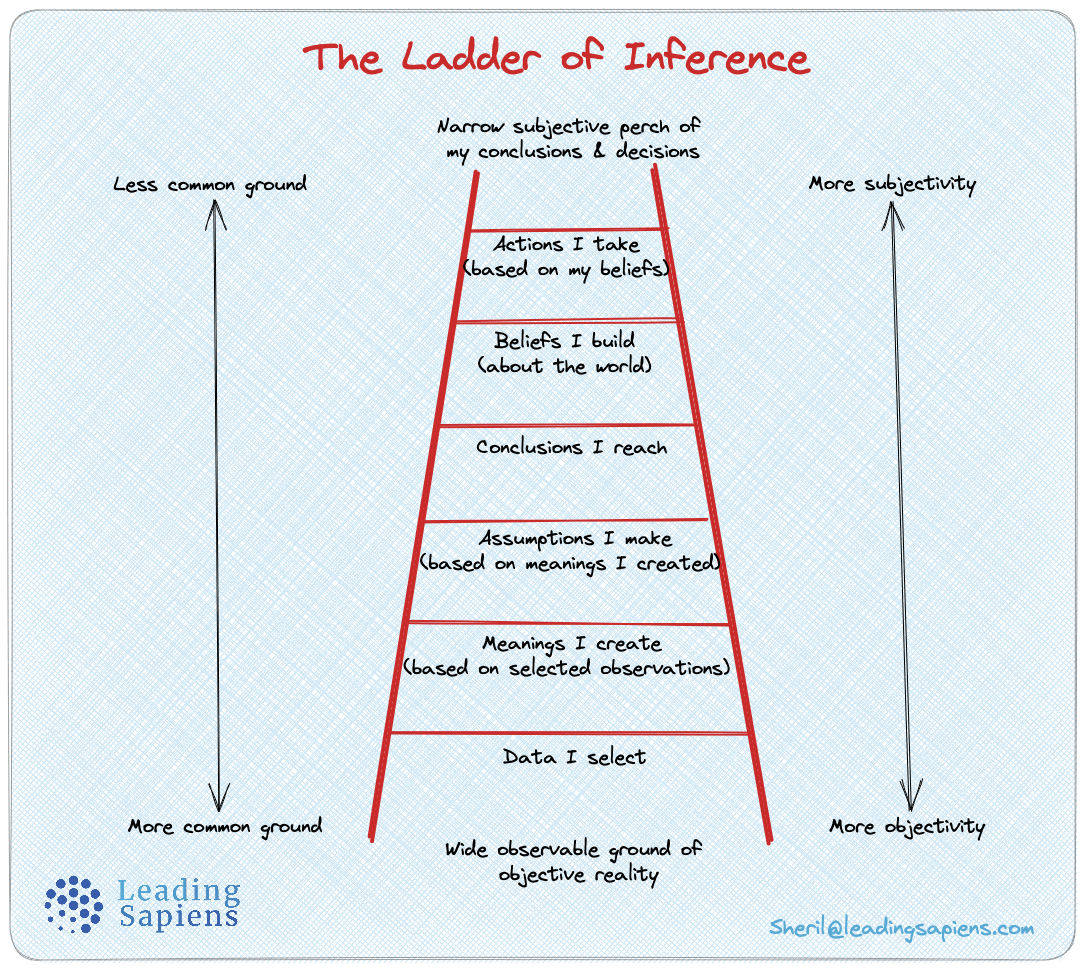
(7) Building a practice model
Models are ubiquitous among mechanics, surgeons, and others. Leaders should have a model. Knowing oneself is equivalent to knowing one’s personal model and its impacts on one’s own leadership practice model.
The leader’s practice model comprises guidelines for ways of performing—of acting, interpreting and responding to acts of others, and correcting his or her own model’s flaws.
- Most leaders have particular ways of looking at organizations that restricts their available action set. The Bolman-Deal 4 frames of organizations is a useful model to learn alternative ways of understanding your teams and company.
- Correcting your model's flaws start with first recognizing the one you are actually using. Double-loop learning is an excellent framework to start this process.
How Double-Loop Learning Improves Performance
Our actions, and by extension performance, stem from thinking that is based on a set of hidden mental models. How do you uncover these mental models and change them? One way is to understand and practice the concepts of single-loop and double-loop learning. Professional sports teams use postgame films and
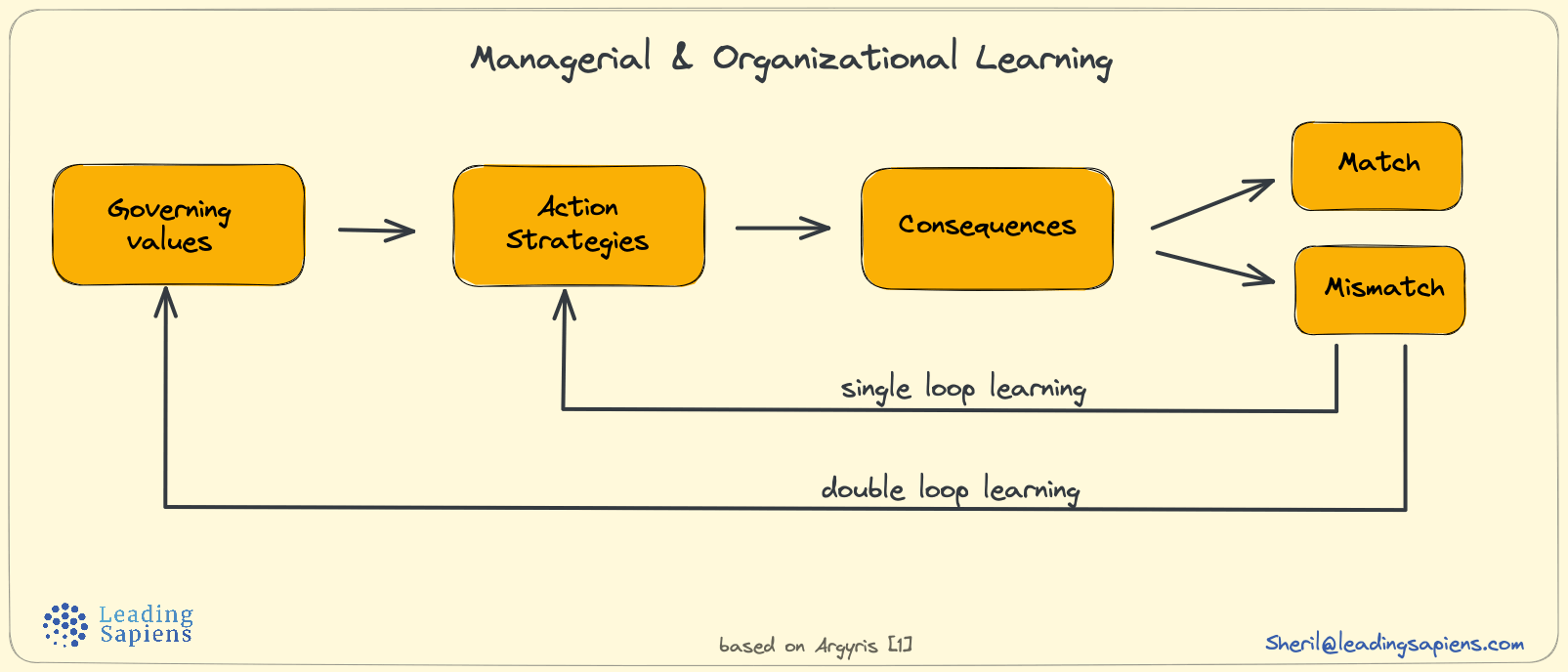
(8) Balancing arrogance & humility
Arrogance and humility represent two ends of a continuum. Extreme arrogance is seen as evidence of overgrown self-importance; extreme humility is seen as evidence of a leader’s low opinion of his worth. In moderation, both add value. Self-knowledge and the ability to read the room help leaders maintain balance.
- Hubris derails many otherwise promising careers. Two effective antidotes are continuous self-development and skilled reflection. Self-development is very much in the hands of individual leaders instead of organizations. And reflection is one of the key mechanisms how leaders sharpen their thinking.
(9) Operating under pressure
In high-stakes situations, leaders must be able to stay focused and under self-regulated control in order to see present dangers and make decisions that guide others toward best solutions. One’s own shadow tends to surface uninvited in high-stakes situations and crises. High-stakes leaders must take responsibility for their own shadows and be prepared to help others manage theirs.
- Keats' notion of negative capability is highly applicable to leaders who are constantly working in a high pressure environments rife with ambiguity and uncertainty.
Why Developing Negative Capability is Critical in Leadership
Leadership development is usually about positive abilities. Negative Capability is often forgotten but equally critical. What is it and what prevents it?
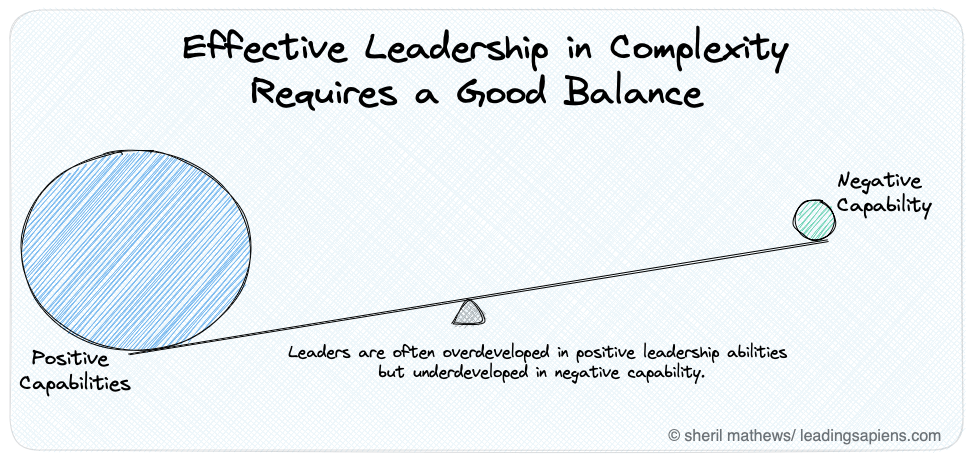
(10) Taking risks
Risk is necessary, but the justification for risk should always be the common welfare rather than personal interest. Taking on proper risk is courageous without being reckless. It requires vision, but also judgment as to when to “buck the crowd.” It may require putting one’s job at risk for the sake of unacknowledged truths—a strength of exit leaders.
- Existential courage is very different from physical and moral courage that most of us are familiar with.
- Leadership is a decision before it is a skill or trait. And the risks associated with making that decision are part of the terrain.
Leadership as More a Decision than Skill or Ability
The default way of looking at leadership ability is in terms of skill, style, or talent, which in turn drives actions and behaviors. But skills and talents are not sufficient for effective leadership. There’s another simpler but necessary step — the decision to lead. In this view, leadership is a
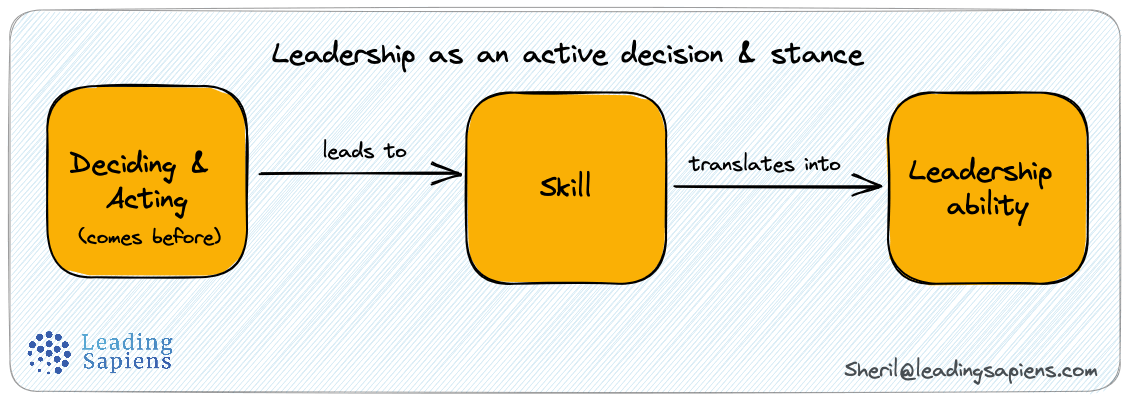
(11) Recognizing patterns
In observing face-to-face relations — and relations in larger contexts —leaders must be able to recognize repeating patterns in sequences of verbal and nonverbal exchange.
Reading the room, leaders can discern constructive and destructive communication patterns and know how to manage both.
- The Johari Window is an effective tool for leaders to understand how they might be coming across and where to make adjustments.
The Johari Window: A Guide for Leaders
Johari Window is a 2x2 matrix that captures how we communicate based on self-knowledge and how others see us. It’s a disclosure-feedback model of awareness based on principles of feedback and learning. It can be used for increasing levels of openness, self-awareness, and self-understanding. This makes the Johari Window a particularly relevant tool for leaders and managers.

(12) Understanding systems
Systems thinking, recognizing an organization’s complexities and ambiguities, avoids the trappings of simple but misleading explanations. In systems thinking, cause and effect are circular. Circularity sheds a more neutral explanatory light than do one-sided blame and moral judgment.
- Paradoxes inherent in management, and contradictions that are part of organizations, are additional aspects that are critical for leaders to understand.
(13) Managing organizations
As managers of large organizations, leaders know their own and their leadership team members’ strong and weak capacities and their own and team members’ edges of growth. Their own model includes leading team members toward personal growth and leading the team collectively toward effective communication.
Leaders also know how large organizations work as systems and are able to navigate unruliness and competition between subsystems. They can also direct a large membership that looks to them for meaning in work and a clear purpose toward which to strive.
- Balancing the tension between top-down and bottom-up initiatives is what Andy Grove called the dynamic dialectic.
Andy Grove on Balancing Top-down vs Bottom-up Approaches to Leadership
Ever wonder why that particular initiative of yours never got traction? Organizational politics kills more initiatives than people realize, and happens both at leadership and individual contributor levels. Understanding some of the dynamics can help to better navigate the terrain. Three organizational layers and their experiences * The individual contributor: You
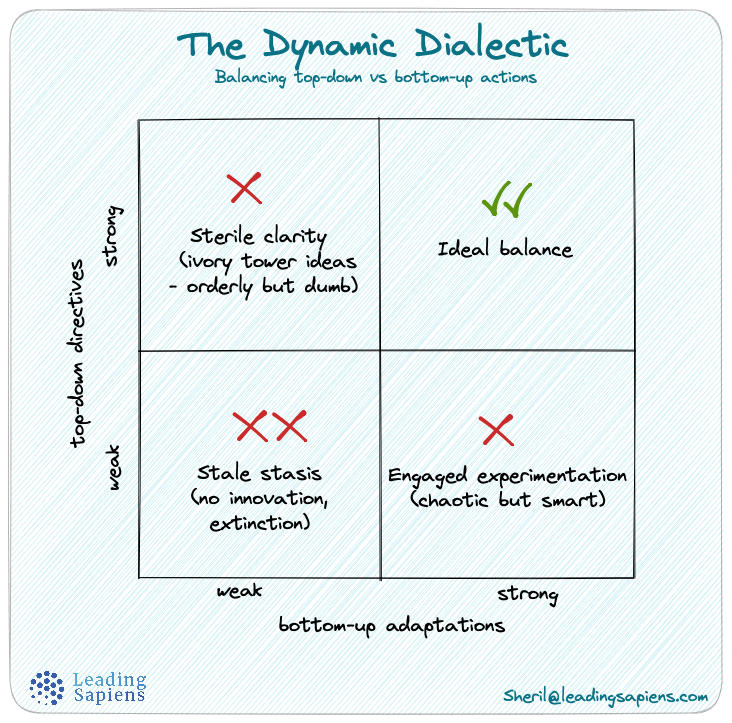
(14) Acting morally
A moral act here is a decision to sacrifice personal material gain. An organization without a moral purpose will eventually collapse. External controls play a necessary role in preventing immoral acts, but final responsibility rests with individual leaders.
Leaders recognize that most critical decisions have moral repercussions that affect the lives of others, and include this recognition in decision making.
- Anxiety is the other side of decision-making and leaders understand this basic fact. This means not running away from it, and instead embracing it.
(15) Storytelling
Leaders are able to create, refine, and communicate effective narratives to relevant audiences. They know the distinction between a structural story and a moral story. A moral story blames, whereas a structural story describes in morally neutral terms.
In high-stakes situations, structural dynamic thinking puts a damper on moral storytelling. Storytelling ability includes a will to know and, when appropriate, tell one’s own stories, and the ability to imagine and/or take in others’ behavior-explaining stories.
- Managing and mastering context is a critical leadership skill. The problem is that too many leaders are focused on content, and not enough on context. Storytelling is one way to manage context.
The importance of mastering context in effective leadership
Context is a powerful tool in leadership but goes underutilized and misunderstood - a deep dive into why mastering context is essential to effective leadership.

(16) Imagining possibilities
Organizations tend to ripen and then go stale. Leaders who have or are open to visionary foresight are needed for steady growth in the future, but they must also gather an inner circle capable of constraint; that is, they must welcome diverse profiles into the group.
- Another aspect of possibilities is future-based thinking and understanding how time behaves differently in leadership.
(17) Mobilizing energy & morale
Accomplishing existing goals and setting new ones call for a leader who can mobilize energy and morale from coleaders and lieutenants, from the organization’s membership, and from external agencies and communities whose confidence matters.
- Leaders' actions have an amplifying effect both inside and outside their organizations. One reason is because people copy leaders. Why? From a complexity standpoint, it's simply the smartest thing to do.
- Leaders often do the opposite of what'll actually help their cause. Instead they unknowingly sabotage their strategy.
(18) Optimizing
Optimization is the path to functioning at the highest level. Leaders who optimize recognize limits that are imposed on them and are realistic about what is possible, but do not allow pessimism to stifle their ambitions and goals. They don’t doze at the helm and are prepared for the unexpected.
With leadership team diversity in place (not only followers but an ample crew of strong opposers and bystanders as well), leaders understand how high stakes affect even the best performers, including themselves.
- A key aspect of recognizing limits is developing what the poet John Keats called negative capability.
(19) Maintaining confidence
When belief and faith plunge, leaders are on deck as their organization’s prime mover, its voice—whether they issue a call to act unilaterally with conviction, to patiently wait, or to bridge and compromise.
On the arrogance-humility continuum, they know where to stand firm, casting an image of confidence others will follow.
- Confidence can be tricky territory. Here's an alternate take on confidence in leadership compared to what you usually come across.
(20) Articulating narrative purpose
Leaders must have a “big story” of their organization’s larger purpose, including a model for carrying out that purpose, and both the story and the model are buttressed by an underlying moral premise. They and their top teams must encourage but integrate their differences into a coherent message that is effectively conveyed to the organization and the world at large.
- Leadership is a context sport. The more leaders are adept at managing context the better their teams can respond effectively.
- Whether by default or by design, there's always a story and it's the leaders job to craft it. Framing to create psychological safety is one way how leaders can influence this process.
Sources
- Reading the Room by David Kantor.


